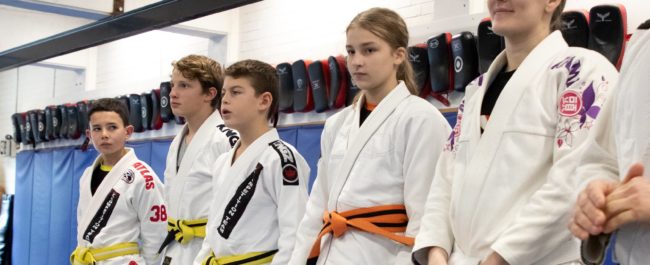BJJ Belt Ranks simply explained
People often ask about BJJ belt ranks. Brazilian Jiu Jitsu is like many other martial arts in that the practitioners wear a series of coloured belts. It differs in that it generally takes more time and skill to advance from one colour belt to the next.
So let us explain how this system works…
BJJ belt ranks explained
Again, like many other martial arts, students start with a white belt. They can then progress to blue, purple, brown, and then finally a black belt.
Once they are promoted to a blue belt, a student has to remain at this level for a minimum of two years.
A purple belt is considered an intermediate level. A practitioner has to stay at this level for at least 18 months. This level in BJJ is often considered to be the equivalent of a black belt (instructor) in other martial arts.
Practitioners have to be at least 18 years old to be a brown belt. It takes, on average, five years of dedicated training to reach this level. You have to be a brown belt for at least a year before you can be considered eligible for a black belt.
There are ten degrees to a BJJ black belt. It generally takes about three years to earn each successive degree. These degrees are based on skill, teaching ability, and contribution to Brazilian Jiu Jitsu. Eighth degree black belt fighters are awarded a coral belt (red and black). Ninth and tenth degree black belt holders wear a red belt.
Children’s belts
As you might expect, kids also start with a white belt. However, there are age requirements for earning a blue belt and above. Therefore, until the age of 16, children are awarded a different set of belt ranks. After white, kids progress to yellow, orange, and finally green. There are four striped for each belt.

